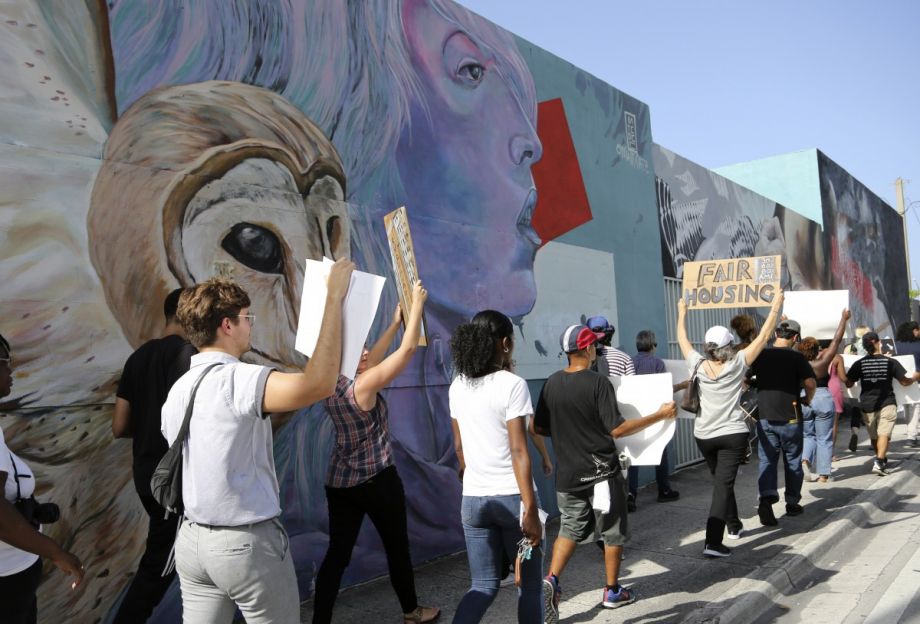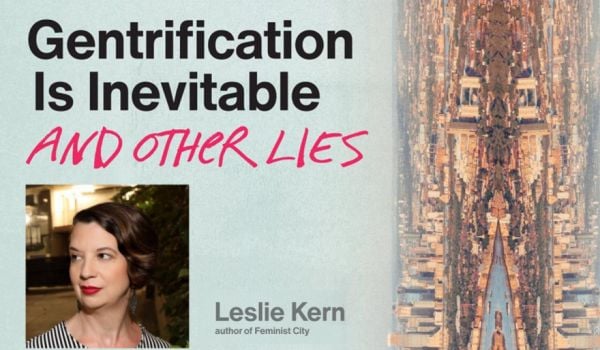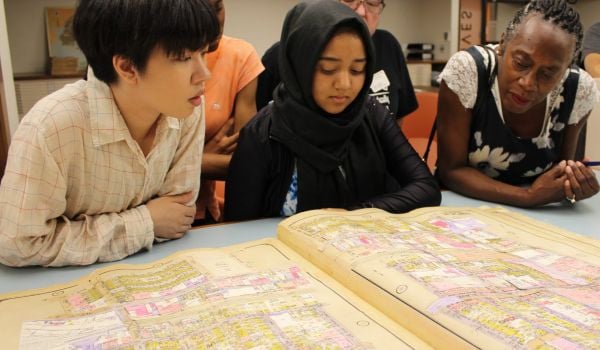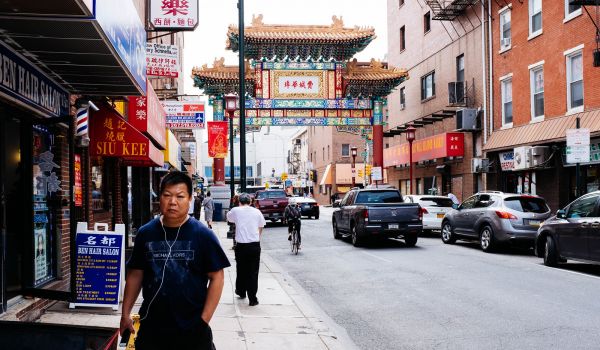A new study from the Federal Reserve Bank of Philadelphia — the first longitudinal study to look at gentrification’s long-term effects — suggests that displacement due to gentrification is less widespread than is typically understood. It also suggests that people who are displaced by gentrification are not materially worse off after they move, and that many people who remain in gentrifying neighborhoods see some benefits as neighborhood poverty rates decrease. The data compiled by the authors presents a new opportunity to understand how gentrification works, but some advocates suggest their conclusions shouldn’t be taken at face value.
“There’s two sides to this gentrification story,” says Davin Reed, a community development economic advisor at the Philadelphia Fed, and coauthor of the study. “I think a lot of the previous research focuses on one side, which is the challenges, and we don’t want to downplay those at all.”
Prior to the current era of gentrification, before the turn of the century, many cities and neighborhoods were facing a host of problems related to the opposite process — a net loss of people and jobs due partly to deindustrialization and white flight.
“It’s not crazy to think that the reversal of that process, while creating some challenges, could create some opportunities as well,” Reed says.
The research focuses on the 100 largest metropolitan areas in the United States. Reed and coauthor Quentin Brummet constructed a dataset tracking individual responses to the 2000 Census and the American Community Survey 2010-2014, allowing them to identify original residents of gentrifying neighborhoods and changes in their housing locations, rents, and incomes over time, among other outcomes.
“Overall,” the authors conclude, “we find that gentrification creates some important benefits for original resident adults and children and few observable harms.” Residents who choose to stay in their gentrified neighborhoods are less exposed to poverty; residents who move usually end up in similar neighborhoods, no worse off, the study said. There’s even some evidence that children growing up in gentrifying neighborhoods are more likely to attend and complete college, compared to children in non-gentrifying neighborhoods.
The study defines gentrification as “an increase in college-educated individuals’ demand for housing in initially low-income, central city neighborhoods.”
Gentrification does cause some “out-migration” of residents relative to non-gentrifying neighborhoods, but the effect is fairly small — a 4 to 6 percent increase for “less-educated renters” and a smaller impact for other groups, according to the study. In other words, even though more than half of the “less educated renters” in gentrifying neighborhoods moved, most were going to do so anyway. The study also didn’t find that residents’ incomes or commute distances changed much, whether they stayed or left.
Reed says that many conversations about gentrification don’t account for the high rates of out-migration from all neighborhoods, whether or not they are gentrifying.
“Gentrification is obviously real,” Reed says. “It’s a process. Neighborhoods change and they’re changing very quickly … [but] there’s this implicit assumption that if not for gentrification, no one would ever move, and our research is showing that’s just way off-base.”
Reed says that he and Brummet, a senior research methodologist with NORC at the University of Chicago, began the research three years ago, while Brummet worked at the Census Bureau. They were interested in finding out how much gentrification causes displacement, and in tracking other impacts it has on people leaving gentrifying neighborhoods.
In the paper, the authors assert that displacement concerns have led to both an increase in NIMBYism and the return of rent control to policy discussions about urban housing problems. Their data suggests that most people are able to stay in gentrifying neighborhoods, and that gentrification improves those neighborhoods in several ways for the people who stay. They suggest that rather than implement blanket rent control, policies that are narrowly targeted at helping low-income residents remain in gentrifying neighborhoods would be beneficial for those residents, and hint that allowing more housing for in-migrants to gentrifying neighborhoods would increase the benefits for everyone.
The report concludes that the outmigration effects of gentrification are highest for the most disadvantaged residents, and acknowledges that while people leaving gentrifying neighborhoods are not made materially worse off, they “may still incur unobserved costs of moving, such as loss of proximity to friends and family, networks, or other neighborhood-specific human capital.”
The study is “intense,” says Sarah Treuhaft, the managing director at PolicyLink, which has participated in campaigns around anti-displacement and rent control policies. The longitudinal data is novel, and something that PolicyLink and other researchers have been wanting to get their hands on for a long time, Treuhaft says.
Even though the study concludes that outmigration effects of gentrification are smaller than might have been assumed, Treuhaft says, it confirms that gentrification does cause some displacement, especially for low-income people.
“The fact that there are high levels of mobility among renters and housing instability overall among lower-income renters, that’s a reality in our housing market,” Treuhaft says. “And so I think that that underlying reality makes it challenging to understand gentrification and displacement.”
Treuhaft also notes that the report doesn’t show the impacts of gentrification sorted by race, even though “we know that serial displacement disproportionately affects black women.” It also doesn’t examine the psychological impacts on people who leave gentrifying neighborhoods. No single report can do it all, Treuhaft says, but case studies or interviews with displaced people would help create a fuller picture of the issue.
“[The authors] point out the importance of targeted strategies to help people stay in gentrifying neighborhoods, and I agree with that point,” Treuhaft says. “And I think that tenant protections need to be a part of that approach, and a strong focus on affordable housing, cultural preservation … targeted hiring to connect people to economic opportunities and other strategies that focus on lower-income renters of color and other vulnerable groups.”
Later, by email, Treuhaft added: “We cannot think of gentrification as good when we know it leads to increased displacement of lower-wealth residents and the erosion of cultural diversity and vitality.”
Karen Chapple, faculty director of the Center for Community Innovation/Urban Displacement Project at the University of California, Berkeley, says that several studies in the past few decades have established the co-benefits of gentrification for residents that remain.
“What is interesting is that communities on the ground, as well as the media, still have not accepted this consensus,” Chapple wrote in an email. “These authors ask us to weigh the benefits of gentrification against any harms. But even if displacement happens to only a few, communities perceive it as a violent process, and for some it begins a downward spiral. With such powerful negatives, it remains hard for communities to accept even in the face of net benefit. It is hard to be rational.”
Moreover, Chapple says, the study’s “very limited” definition of gentrification, based on education, leaves out the impact of “place gentrification,” measured by the influx of capital, rather than just an influx of highly educated people.
“Because the authors don’t look at this, the policy recommendations are suspect — they advocate building new housing but don’t analyze the effects of that,” Chapple wrote.
This article is part of Backyard, a newsletter exploring scalable solutions to make housing fairer, more affordable and more environmentally sustainable. Subscribe to our weekly Backyard newsletter.

Jared Brey is Next City's housing correspondent, based in Philadelphia. He is a former staff writer at Philadelphia magazine and PlanPhilly, and his work has appeared in Columbia Journalism Review, Landscape Architecture Magazine, U.S. News & World Report, Philadelphia Weekly, and other publications.
Follow Jared .(JavaScript must be enabled to view this email address)


















